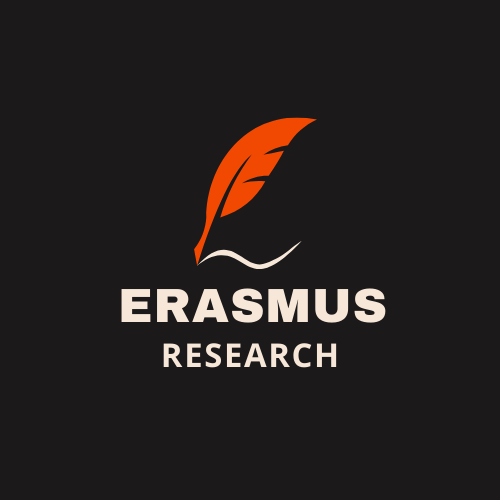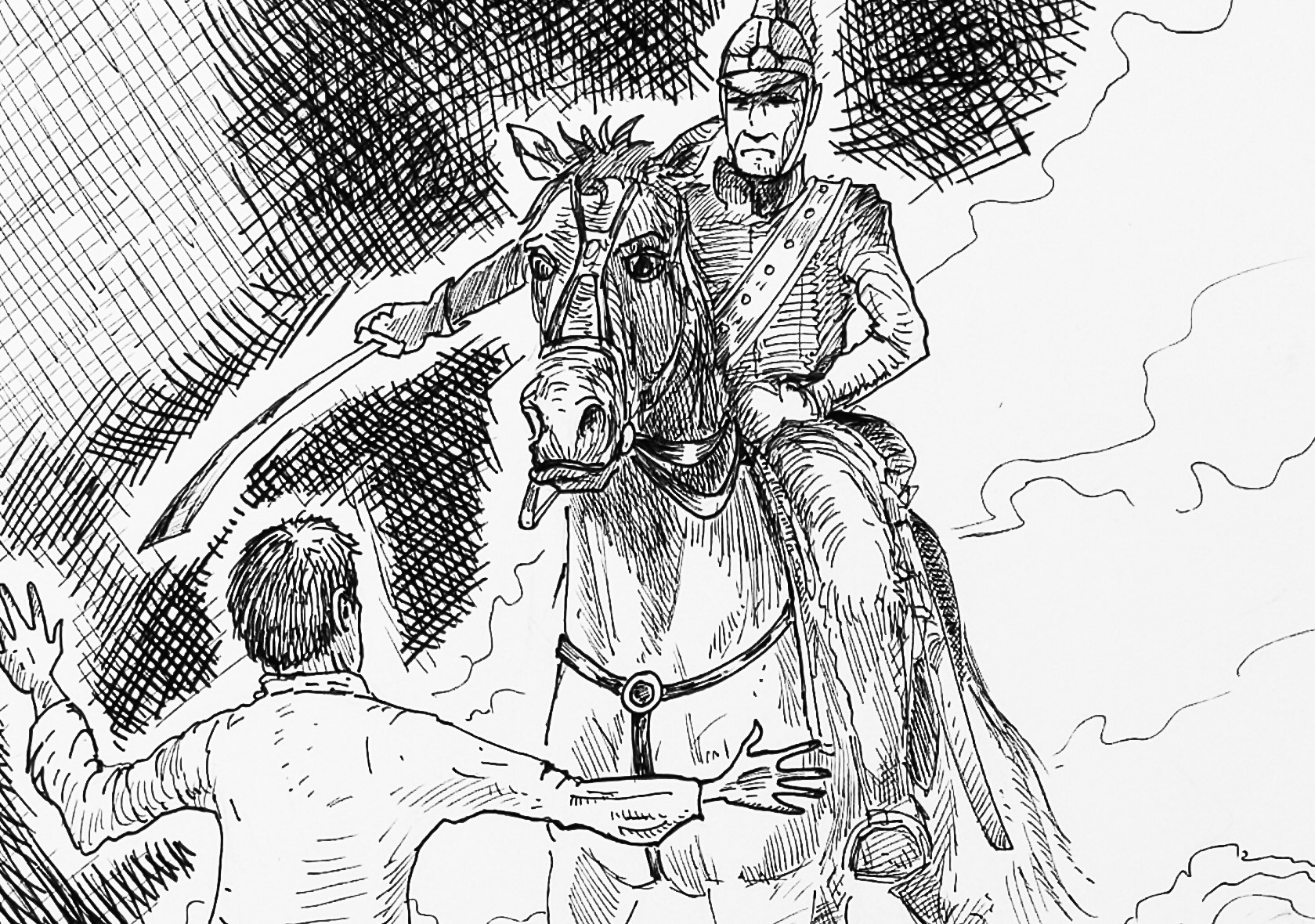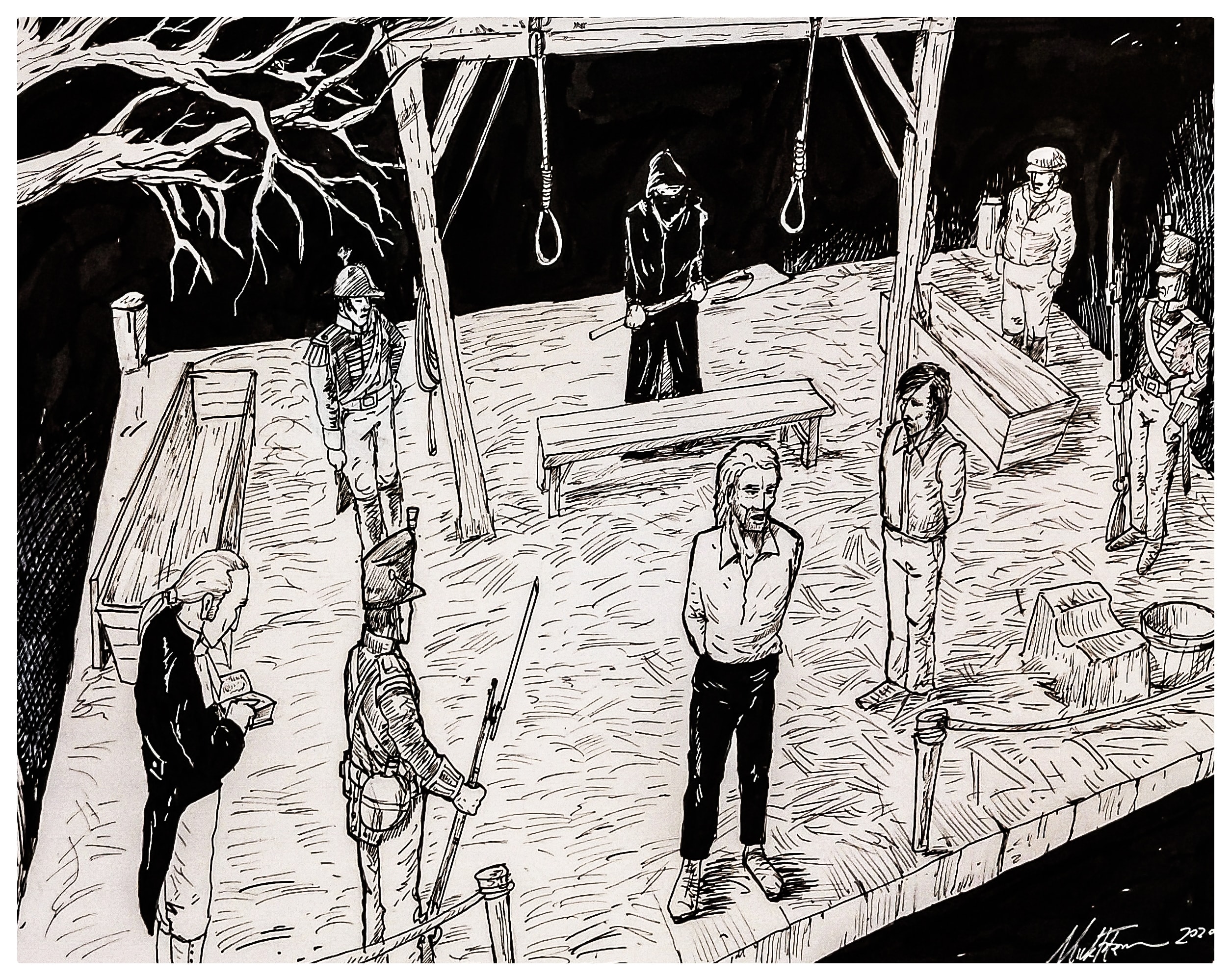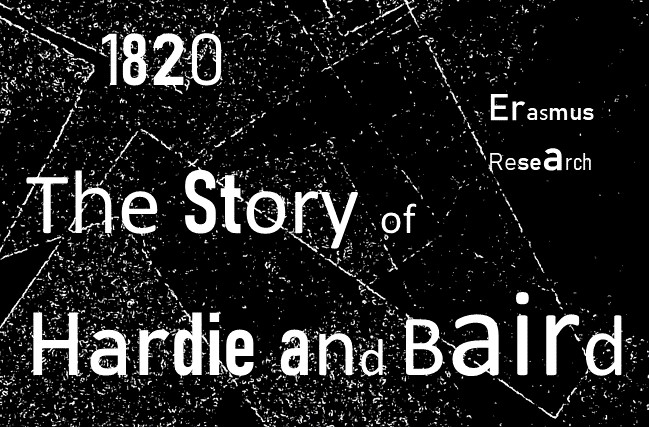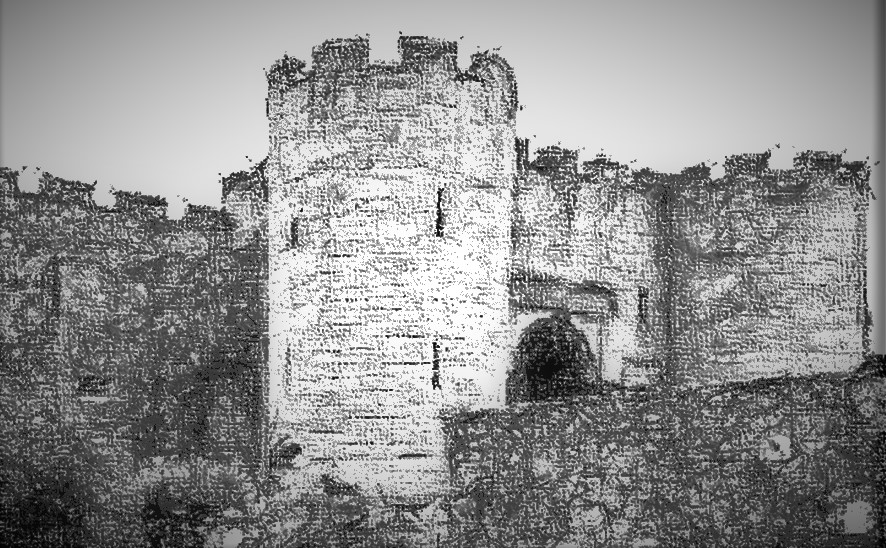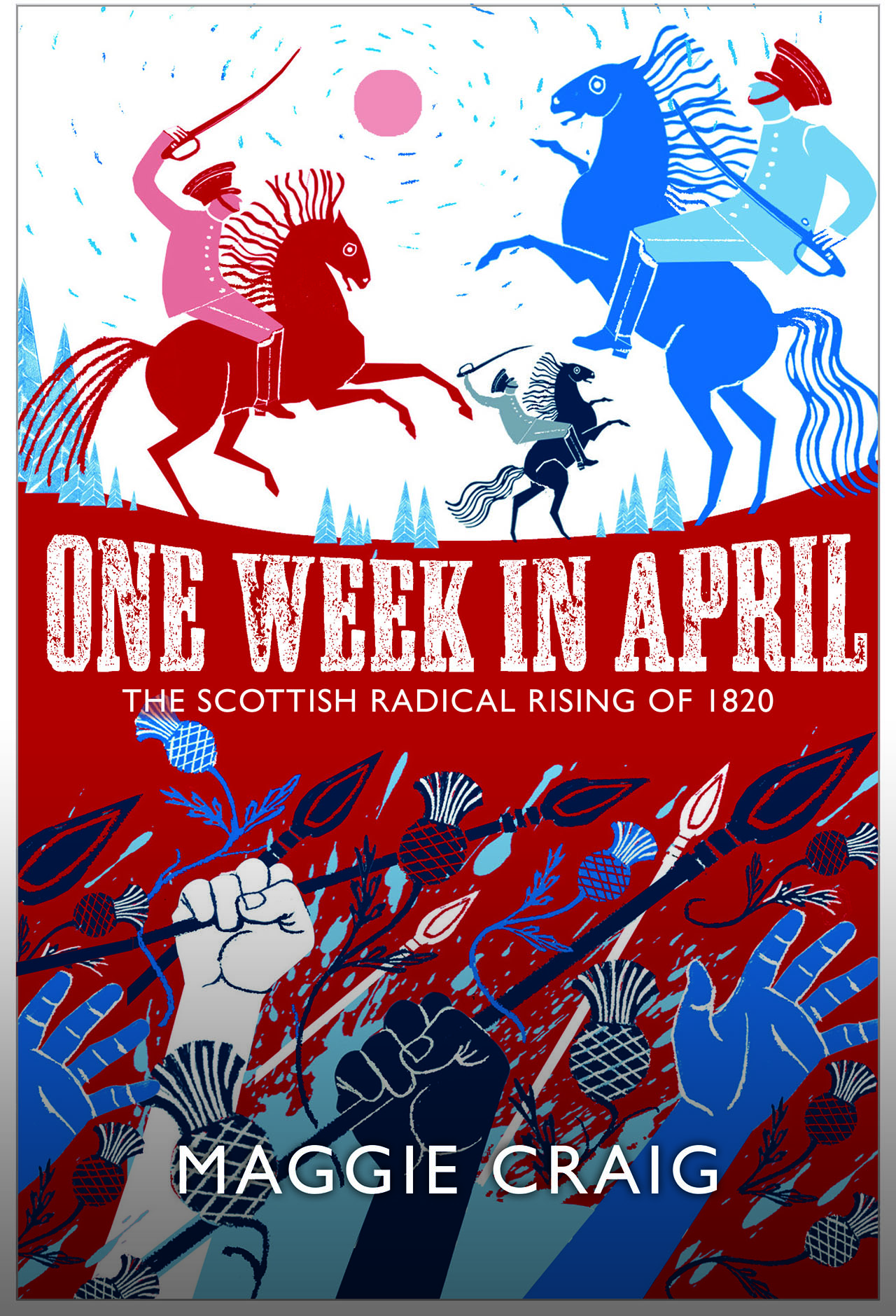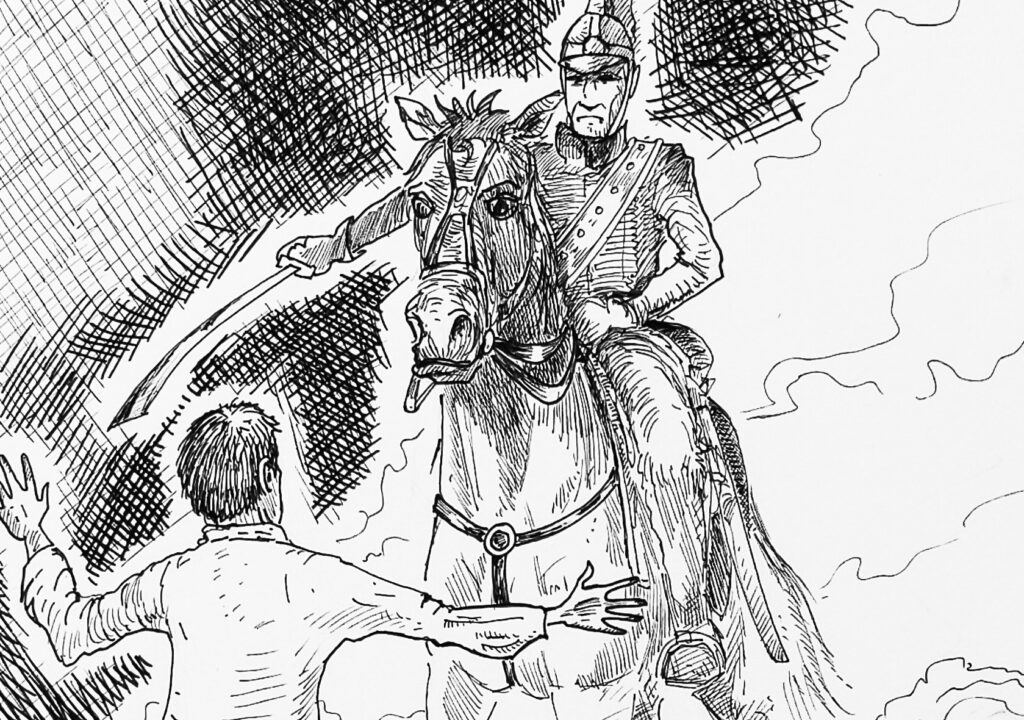
CHAPTER VII – 1820
This is the first section of Chapter VII of the serialisation, the wording reproduced exactly as it appeared in the Stirling Sentinel, on Tuesday 26th March 1889.
THE WOUNDED ON THE FIELD OF BONNYMUIR – HOW A GLASGOW PRINTER ESCAPED – THE OFFICIAL ACCOUNT OF THE BATTLE – REMOVAL OF BAIRD AND HARDIE TO EDINBURGH CASTLE – LETTERS WRITTEN IN CONFINEMENT THERE – APPOINTMENT OF SPECIAL COMMISSION TO TRY THE RADICALS – PREPARATIONS FOR THE STIRLING TRIALS – ARRIVAL OF THE PRISONERS – RECEPTION OF THE COMMISSIONERS – THE FIRST DAY IN COURT
Two of the Radicals, more seriously wounded than the rest, were left on the field of Bonnymuir. Lieutenant Hodgson, fearing there might be a rescue, thought it was better to secure the prisoners he had than remain longer on the scene of the action. One of the wounded men was a printer from Glasgow, named Black, who had an uncle, a weaver, at Larbert. According to Black’s own story, he was flying a fugitive from the muir when a hussar overtook him, and striking the pike out of his hand told him to make himself scarce. He had not gone far, however, when he encountered three bloodthirsty yeomen, who, less considerate than the hussar, cried “Cut the Radical down,” and the foremost, suiting the action to the word, wounded Black dangerously about the head and shoulders.
He was, in fact, thought finished. But as good luck would have it, a neighbouring farmer at Damhead, named Alexander Robertson, happened to be about the field shortly after the skirmish, and seeing Black lying apparently at the point of death, had him carried to his house, and with his wounds dressed, put to bed. The night following, he was able to leave Damhead for his uncle’s house at Larbert, but it was expedient to have recourse to some stratagem to escape the vigilance of the yeomanry, who were on the outlook for the Radicals.
The plan was that Black’s uncle, Allan McClymont, and his son James, were to come to Damhead about midnight, when Black would make his escape by a back-room window, wearing the former’s blue bonnet in lieu of his own tattered hat. This scheme was successfully carried out, but the laird of Carnock, getting intelligence of the escape, rode to Larbert with a band of the yeomanry, only, however, to find the bird flown. McClymont’s house and outhouses were thoroughly searched, and an apprentice lad, named Craig, who lay sick in a garret with his head bandaged was taken for the wanted fugitive. But the mistake was soon seen; and after the family had been put on oath and deponed that they knew nothing of black’s whereabouts, the brave yeomen left the house with a volley of curses. They managed to capture three Camelon Radicals, who were afterwards tried and sentenced to banishment for life.
On Thursday, the 6th of April, the following official account of the affair at Bonnymuir was issued by Major-General Bradford, Commander of the Forces in North Britain: –
“GENERAL ORDERS”
Glasgow, April 6, 1820.
“Two orderlies, having been intercepted by a band of armed men between Kilsyth and Stirling, on the morning of the 5th of April, Lieut. Hodgson, 10th Hussars, and Lieut. Davidson, of the Kilsyth Troop of yeomanry with an equal number of men from each corps, by a rapid and judicious movement of nine miles from Kilsyth, came up with the offenders, and after receiving their fire, cut down and secured the whole of them, consisting of nineteen armed men.
“Sir Thomas Bradford requests Lieuts. Hodgson and Davidson, and the non-commissioned officers and privates employed, will accept his best thanks for the zealous promptitude with which they discharged their duty on this occasion.
“The General cannot help but notice, as a circumstance highly creditable to the zeal of the Kilsyth troop, that the Hussars were mounted for the occasion on horses lent them by the yeomanry, in consequence of their own having made a forced march – and he will take care that the owner of the horse upon which Lieutenant Hodgson rode, and which was killed, shall be indemnitied for his loss.”
Lord Sidmouth, Home Secretary, lost no time in transmitting, through his friend the Duke of Montrose, a letter of thanks to the Yeomanry of Stirlingshire for their conduct at Bonnymuir, and caused an extraordinary bulletin, giving an account of the skirmish, to be published in London. When the news of the “battle”, in a very exaggerated form, reached Glasgow, there was great excitement, and the bells were rung as if another Waterloo had been gained. Public meetings were afterwards held, at which resolutions were adopted congratulating the Government upon their success. Many of the merchants and manufacturers subscribed a declaration to withdraw their employment and support from every person who had lent his aid to the “wicked and treasonable conspiracy” detailed in the address.
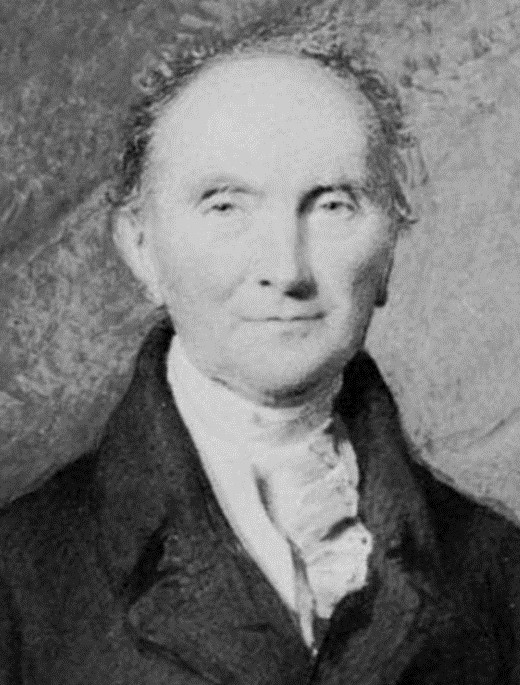
To be continued,
